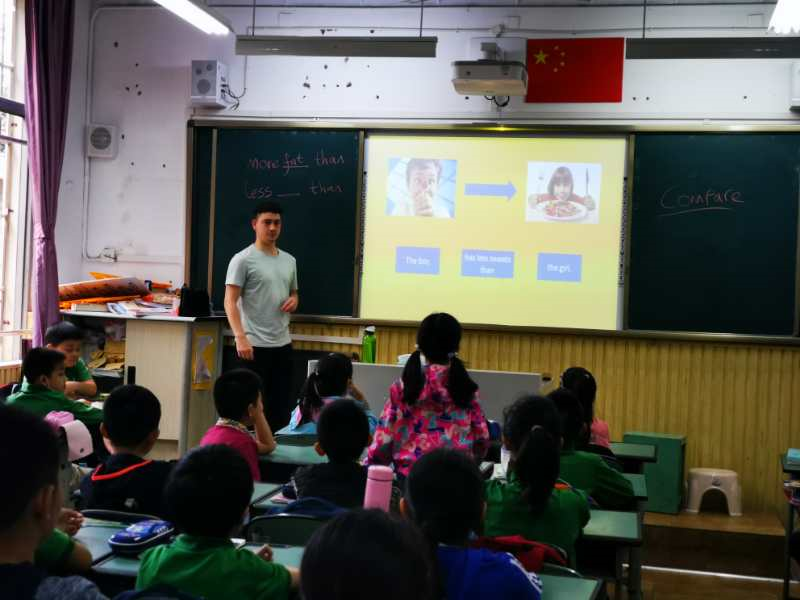What an interesting year this has been. As early as September last year I had planned to visit my family in Scotland, the UK, in the Spring festival. When I finally got home, I was greeted by questions of a mysterious virus that had taken hold in China. After that I soon found out that schools wouldn’t be going back, and the future was uncertain. Scary times indeed. But China recovered and it was fantastic news to hear that at the beginning of May our school would be back in action.
It will come as no shock to hear that my first month of lessons have focused on the virus. My first lessons were with grade 3. For this lesson I focused on how to stay safe whilst coming back to school. We wanted to minimise the risk of any outbreaks at the school and so focused on ‘good behaviours. I started by allowing the children to discuss with each other which photos they believed to be good behaviour for preventing a virus outbreak and which were bad. They responded well to this and managed to identify the good behaviour with ease. Some of the good behaviours we learned in this class included avoiding contact with other children, taking temperature, and of course wearing a mask. By reminding students of good behaviour in their first week it made sure they did not forget that the virus was still very much a danger.
I followed a similar approach with grade 1 and 2 by simply trying to explain why we get sick. The children learned “germs” and that germs make us ill. Alongside that we learned that when you cough and sneeze you have to “cover your mouth”. With grade 1 we just learned the simple words and the action of covering your mouth with your elbow when you sneeze. Grade 2 were able to learn the words quickly and so we used them in sentences: “I don’t want to be ill”, “germs make me ill”, and “cover your mouth”. Once we had conducted the lesson we were able to play a game that involved green goo (I pretended it was snot from my nose) on a tissue they could throw at the board for points. This caused a great excitement and a lot of cheering!

With the older grades; 4, 5 and 6 I wanted to move away from rules and start to use more complex English grammar. We continued to the focus on the virus but this time we practised comparisons. First we spent time doing simple comparisons based on words they knew and could easily recognise. The sentence structure “picture 1 is more fat (for example) than picture 2” and “picture 1 has more sweets than picture 2” helped with simple understanding. They could then practice in pairs with each other using different pictures. It was generally well grasped and participation was high. After the practice I introduced some descriptive adjectives: dangerous, clever, silly, selfish and helpful. Once we learned these words we applied the words to the sentences again working in pairs. This time we described different behaviours around the world during the virus: ranging from dangerous to silly to clever. For a final test I had prepared some sentence jumbled to see if the children had grasped the logic behind creating a comparison. It’s seems like they’ve got it!

It was a great month back after a long time off. I thoroughly enjoyed seeing all the teachers and students again!

